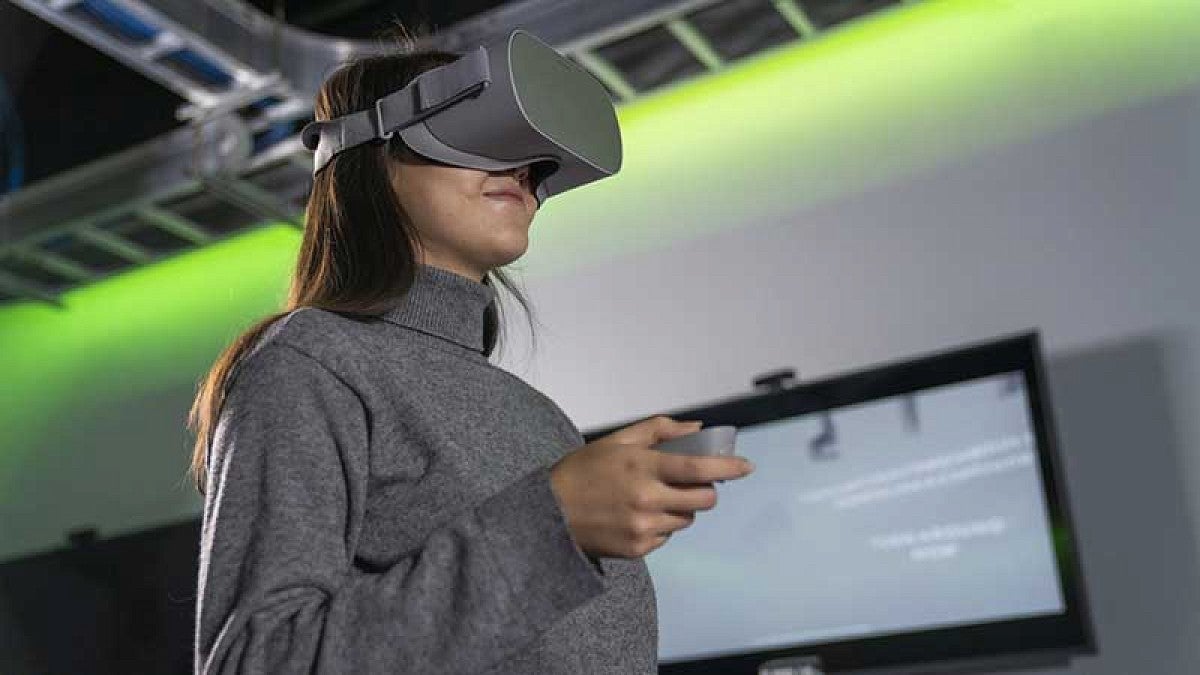In the wake of COVID-19, one of the many inconveniences of life in self-isolation is the cancelation of large gatherings around the world. Instead, many have begun transporting to virtual gathering places to connect and commiserate.
Donna Davis, director of the strategic communications master’s program and Oregon Reality Lab at the School of Journalism and Communication’s Portland campus, has researched these virtual spaces for more than a decade. Her work focuses on marginalized and vulnerable communities, including people with disabilities, and the rich online lives they have built to get around their physical limitations.
Davis said the pandemic has accelerated an organically growing trend toward more accessible, complete and engaging virtual social lives for all people.
“Obviously, this is not the way I saw it happening,” she said. “But there’s no doubt virtual worlds have gone from the fringe to the mainstream.”
Those virtual worlds range from the now-ubiquitous Zoom to more engrossing online experiences, like Second Life, where people can easily express a wide range of emotions, find ways to entertain themselves and be creative.
Davis’ work, including ethnographic research among online deaf communities and individuals with Parkinson’s disease, has unearthed ways for people to use virtual spaces for social communities, job creation and discovering new talents.
“These communities have incredibly vibrant, healthy social lives,” Davis said. “They are way ahead of the curve because they’ve been functioning in online social worlds for a long time.”
Yet Davis knows the transition to virtual companionship and communication is difficult for the many who have been recently forced into it, and that’s partly due to the limitations of the most popular technologies.
She thinks Zoom, especially in an education setting or for creative brainstorming, can be a poor substitute for open, in-person communication.
“Finding ways to be really engaging in this kind of virtual environment has been a real challenge for people who are not used to it or who've never been comfortable on a screen before,” she said.
Teachers at all levels are finding students and teachers can be logged in but checked out, and the critical back-and-forth dialogue necessary to learn and shape ideas can be hard to replicate outside the in-person classroom.
Nikki Dunsire, an instructor in the School of Journalism and Communication in Portland, has made the leap to digital instruction more easily than others.
In the winter, she led her class of graduate students through the basics of VR via Unity, a platform for creating virtual experiences. Dunsire was all set to lead her eight students through the next class in the series this spring, when they would create their own virtual content.
That’s when COVID-19 arrived, the campus closed and classes went fully online.
“It forced everyone to shake up their plans,” she said. “I guess I was a little more prepared with my tech.”
Dunsire said teachers need to be flexible when moving their instruction into a virtual environment, as students and class dynamics are thrown into flux. She decided to record her lectures, so students could watch whenever it fit their schedules, and instead used class time to sort through technical issues students had with their projects and to be responsive to classwide concerns.
“Building VR is a team sport,” she said. “So it’s difficult for students to be doing this in isolation, on their own.”
Despite some difficulties, Davis notes that others are flourishing in these new digital spaces.
People on the autism spectrum often have difficulty reading facial expressions and social cues but succeed when communicating via text or avatar. People who are deaf are often more confident communicators via text, where they are sure not to miss anything. Some people generally find it easier to speak up in a virtual chat room than in a crowded lecture hall.
Davis also notes this new virtual “unreality” has brought, strangely, some much needed realism to quarantined lives.
“There's a certain sweetness to watching Jimmy Fallon's kids climb over him on ‘The Tonight Show’ instead of the highly produced stage and soundstage,” Davis said. “There's something really authentic, beautiful and wonderful about watching some of these performers who haven't been to the salon and don't have makeup artists.”
Yet there are limits to an online world as well. When the quarantine ends, many will drop their headsets, swear off Zoom calls and return to more socially thrilling face-to-face meetings.
“I think we’re all really hungry to go out and hug somebody,” she said. “We cannot physiologically thrive without touch. We’re social beasts.”
Davis also notes a stronger digital world is in the works, and the necessity of communicating that way has helped many people overcome their suspicions. While many social beasts are eager to get back to “normal,” others have smoothly transitioned to this new reality.
“We've got people out of work who are struggling mightily,” she said. “And we also have people in and out of work who are saying, ‘I can use this kind of space for this creative way to help people get their jobs done, to create a new type of creativity.’”
Davis' work will be featured in the "Better Together Webinar Series: Battling Isolation with Virtual Environments" from 9 to 10 a.m. on Wednesday, June 10. The event includes Ebbe Altberg, CEO of Linden Labs.
—By Tim Trainor, School of Journalism and Communication


